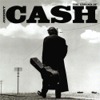I am getting set to try my first knife building project and I have a private source for some O2 and A1 bar in ¼ inch stock. I know the chemical composition characteristics of these metals and I have used them in shop tooling applications (My bench planes have blades made with these steels.) I will be making basic fixed blade survival type knives and skinning knives.
I have some basic forging tools, a decent bench grinder, but no heat treatment equipment. What are your opinions about the respective merits of these two steels for a beginner? Does the answer change if I have access to an oven for heat treatment like Crash uses in some of his videos? My personal style is that I do not baton with knives or use them as pry bars - unless I have to. So sharpen-ability is more important to me than extreme durability for severe uses.
I plan on acquiring a combo belt sander/grinder, but price is a concern. What do you think of the stuff at Harbor Freight and Grizzly? I live too far from HF to visit, so I will probably have to order on line from them or Grizzly and my experience is that some of their stuff is OK and some is bad news, hard to tell from a picture. I am by no means fixed on these vendors, if anyone knows of a good value elsewhere.






 Reply With Quote
Reply With Quote




Bookmarks